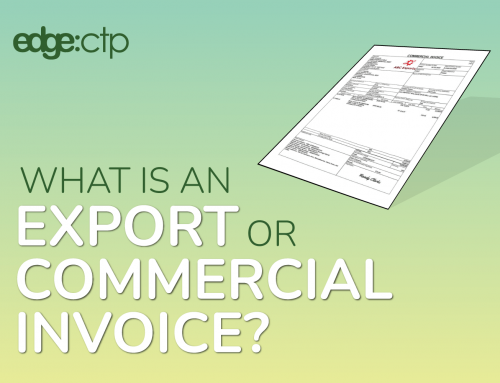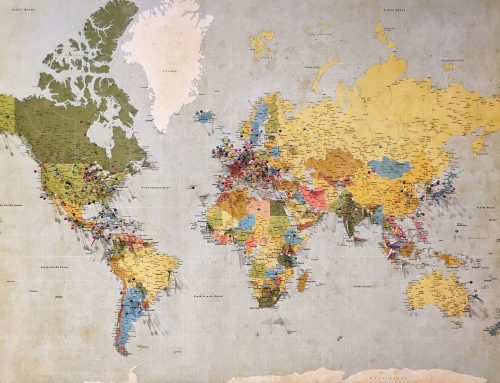Overview: Documents required for Export
I’m Geoff Runcie and at the start of 2015, I was lucky enough to be involved in a series of sessions with the International Trade expert, Murdo Beaton. We were accompanied by Abdul Mann, whose team has built a range of international trade solutions under the brand EDGE. Abdul helped to explore some of the ideas Murdo presented in his answers to what documents are required for export.
Today you’ll hear one of ten questions presented to Murdo, but if you want access to the entire session or future sessions, there is a link at the end of this blog. Alternatively, feel free to drop me an email at support@morgangoodwin.com or visit www.edgectp.com.
A full transcript of this session has been provided below.
Geoff:
Today I’d like to ask, what documents do you need in order to export?
Murdo:
Yes, when you actually talk about exporting and you mention the Word documents, this is almost like a red rag to exporters. They actually do not like documents, because documents would appear to be what seems to cause most of the problems. That is the preparation of the documents and using the correct type of documents.
Now there is no magic or scientific skill about the issue of documents. It should be known at the very early stages of a transaction, even at the stage where negotiations begin, it should be known then to a larger extent the type of documents that will be needed. In most markets, it is already determined the type of documents that are required in order to allow the products to pass through the customs authority of the destination market. In general, we can always say a commercial invoice is needed, a packing list is needed, a copy of the transport document is likely to be needed, and possibly an insurance certificate will be needed if there is a need to ensure the product for the levels of compensation we would get from the carrier if anything went wrong.
(Scroll down to continue……)
Beyond these documents, there could be a range of other documents needed. This would substantially depend on the destination market and the type of document we are supplying. There are certain documents that are peculiar to particular products when they enter certain markets. There’s a whole range of them. There are also of course certain documents that are peculiar to a destination market itself, such as the Certificate of Origin.
There are certain markets that will always suggest that you provide a Certificate of Origin as one of your documents. This is a document that evidences the economic origin of the product you supply. Now, this in itself concerns a complex issue to determine, but it is again governed by procedures, which the exporter will no doubt familiarize themselves with before they actually get to the stage of having to produce a document. Their initial market research would have told them that if you’re selling widgets into this market then you need a Certificate of Origin.
Other documents in the food sector, are certain documents relating to the health position of the product in question. For other products that are used by people on a day-to-day basis, there is a safety issue. Even when we come down to exporting clothing, there is a labeling issue i.e. the information we have to show on the labels. Sometimes we have to provide certain documents to prove what we say on the label is correct. So, there is a wide range of documents that could potentially be used, but in general terms, we will find that a transaction will be wholly satisfied in terms of documentation level by the provision of maybe three, four, or five documents.
Abdul:
And you can identify what documents you need if you know the commodity code of the product, and you can use the internet, and you’ve got Market Access Database tools. We’ve got our tool as well, EdgeCTP that lets you identify for a particular commodity, what documentary requirements you need. But what you’re saying there, is you don’t need all of them….
Murdo:
You don’t need all of them. EdgeCTP is a classic example. It allows you to identify the documents you’ll need for any particular product, destined for any particular market.
Abdul:
Right, and you touched upon the Certificate of Origin. So the Certificate of Origin isn’t required by Carte Blanche all the time. It’s required when the buyer’s market deems it to need a Certificate of Origin. So it’s actually driven from the buyer’s end, not that as soon as you’re sending a widget to an overseas country you think, out of due process, that you just generate a Certificate of Origin, whether you need it or not. It’s better to ask the buyer, what is it that they need in order to get the goods into their country.
Murdo:
Indeed, all of the documents that are required for an export transaction are invariably driven by the destination market. Our own customs authorities at the export leg, as the goods leave our country, are rarely interested in anything beyond the commercial invoice, which would accompany most transactions anyway. However, the destination market emphatically dictates the documents that it requires to be made available for inspection by its customs authorities before the goods are allowed to pass into the market.
It’s important that the exporter is absolutely certain as to the number of documents and the type of documents they have to produce for that particular market for their own products. It is so straightforward to find this out. You mention some of the tools like MADB and EdgeCTP, it’s so straightforward that there is no excuse to send goods to a destination market, and finding on arrival to that destination market a particularly required document has not been provided.
Abdul:
This comes back to our earlier answer we gave to risk reduction. If you do your due diligence and you get your export documentation right it’s going to reduce your risk.
Murdo:
So how can I say it’s a risk when I should have known about it, it’s not a risk, it’s a stupid mistake. You know, it just shouldn’t have happened and there is no need for it to happen. Now, would it be possible for me as an exporter to produce all of the documents that are needed? Well, my surprise might be when I discover there is one document they are looking for that my product is not capable of producing. That might very well be a document relating to the standard that a product has to attain before it enters the market. However, that information should have been available to the business leader when the research was carried out.
Abdul:
Yes, so one example was when I looked at a leather product that was going from the UK to the US, and you might have to correct me on this Murdo, it was a cites document that says no endangered species was killed for the leather used in the handbag. So I guess that’s a good example of where these export documents are needed.
Murdo:
These are the sorts of things we need to be aware of when we’re exporting. Now, if we don’t do the job right then one would argue, do you deserve to be successful? I know quite often that people are put off the export market because of these things, and they think that with the provision of documents, there can be a lot of red tape. Well, there might be some documents that have that label pinned to them, but there are other documents that most certainly would not have that label pinned to them, such as certificates for food-related products. Now these are products that are going to be consumed by human beings and if we’re supplying these types of products to a destination market we ought to make sure that they’re fit for human consumption. This is what this type of certificate does, it proves that they have been tested and are fit for human consumption. Now if we choose to conclude that that is red tape, yes I would agree at the extremities of free enterprise that would be right, but for human being order, I would say no that’s not right.
Abdul:
There’s a level of risk and protection, coming back to that risk element we spoke about earlier.
Geoff:
I hope you enjoyed this audio. If you’d like more information on international trade, go to www.edgectp.com.





